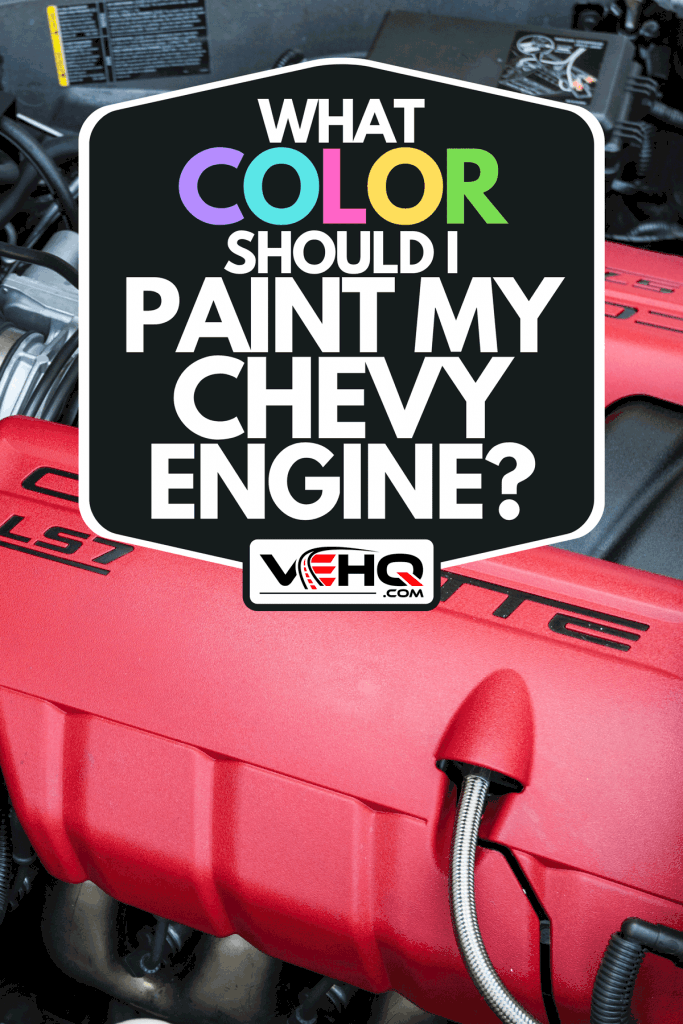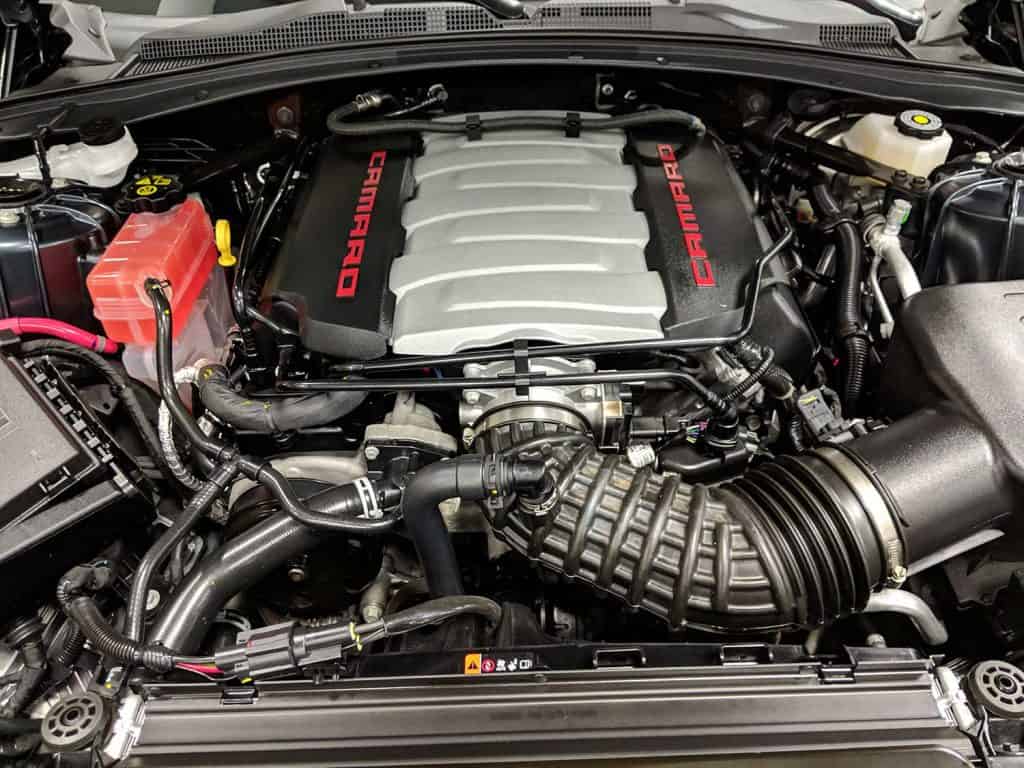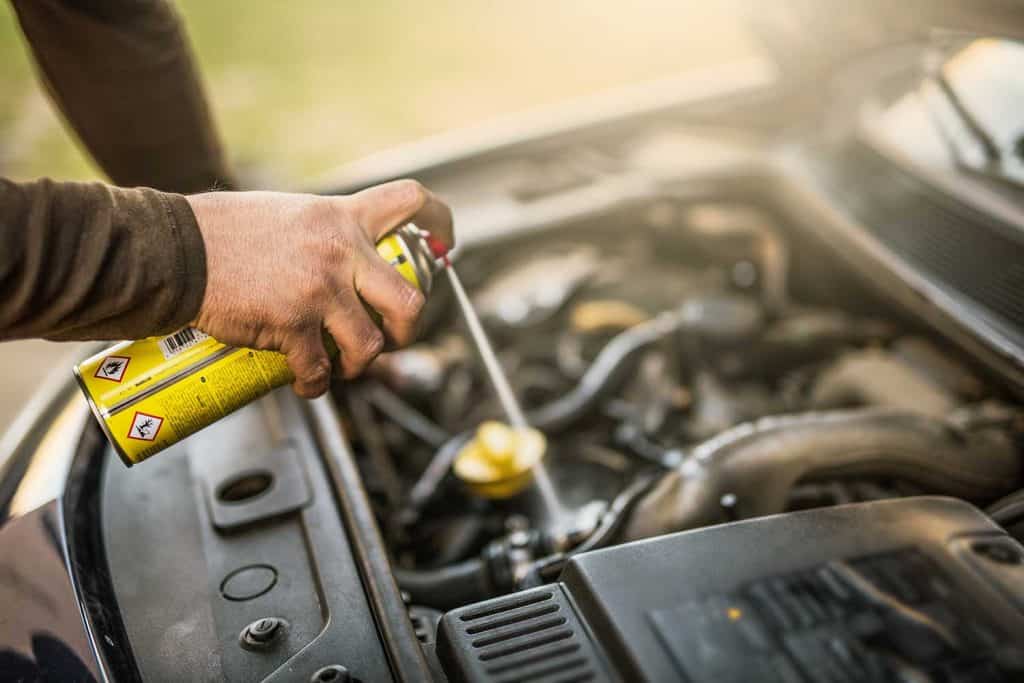Would you like to know what color you should paint your Chevy engine? It can be good to know what other people like for an engine color if you ever want to sell your vehicle. We have researched this inquiry and have answers for you.
Polls have shown Chevy Engine Orange to be the most popular color to paint a Chevy engine because it carries the highest resale value.
This article will cover what color you should paint your Chevy engine and the best paint for an engine block. We will also cover if you can paint over engine paint and how to paint your engine without removing it. Finally, we will discuss if you need to prime your engine before painting and how to clean and paint an engine block. We will cover this step by step so you can do it too. Keep reading to learn more.

[toc]
What Color Should I Paint My Chevy Engine?
You could paint your Chevy engine any color you like, but some colors are preferred by lots of people. A poll finds that the most popular color for a Chevy engine is Chevy Engine Orange on Chevelle's website.
If you are looking for your vehicle to have the most value, then a color that most people prefer would be a good choice.
Is There An Advantage To Painting Your Engine Black?
There is a common misconception that it will gain better heat distribution if you paint your engine black, thus cooling the engine.
This misconception likely started from the fact that black objects radiate heat in the infra-red better than other colors, which allows them to distribute heat better. Engines lose most of their heat through convection, not radiation.
This means that while the black paint will radiate heat better than most other paints, the radiated heat is a small percentage of the total heat transferred out. All of this causes the extra cooling effect of a black-painted engine to be negligible and not of value.
What Is The Best Paint For An Engine Block?
When it comes to the best paint for an engine block, you want to make sure that the paint you use can handle the high heat of an engine. There a paints specifically designed for painting an engine so that they can take the heat.
These are known as engine enamel paints, and while there are many different ones available on the market, we have highlighted three that will work well for any engine you would like to paint.
Rust-Oleum Heat Protective Enamel
Rust-Oleum Heat-Protective Enamel Paint is designed to withstand temperatures up to 1,000 degrees Fahrenheit.
This paint can also protect against rust, extending the life of the engine. Also, Rust-Oleum Heat Protective Enamel Paint is made to hold its color even after repeated heating and cooling.
Click here to see this paint on Amazon.
Dupli-Color Ceramic Gloss Engine Paint
Dupli-Color Ceramic Gloss Engine Paint was made to withstand temperatures up to 500 degrees Fahrenheit. This paint also cures relatively quickly, allowing for faster additions of other coats.
One of the fun features of this paint is its color variety. It comes with a selection of 29 different colors to choose from.
Click here to see this paint on Amazon.
VHT Engine Enamel Gloss Paint
VHT Engine Enamel Gloss Paint was built to withstand temperatures up to 550 degrees Fahrenheit. This paint helps to prevent corrosion and damage to the metal of your engine block.
Click here to see this paint on Amazon.
So Which One Is The Best Paint?
The Rust-Oleum Heat-Protective Enamel Paint is the best paint because it has the highest temperature tolerance and should have the least issues with an over-heated engine.
If color selection is very important to you, you may prefer Dupli-Color Ceramic Gloss Engine Paint because of its large color selection. No matter which you choose, they all provide an excellent protective coat to your engine while adding a stylish color.
Can You Paint Over Engine Paint?
You can paint over engine paint, but it is essential to ensure that the engine is thoroughly cleaned before you paint over existing paint.
If there is dirt, oil, or grime on the engine, it can keep the paint from properly adhering to the engine. You will need to spray the engine with a degreaser spray and let it soak according to the can.
Then wash off the degreaser spray with a garden hose or power washer. Once the engine is clean, let it dry completely before painting. This will ensure your paint job looks good and lasts.
How Can I Paint My Engine Without Removing It?

If you would like to paint your engine without removing it, there is a technique to allow you to do this. First, you want to take aluminum foil and wrap all your hoses and any other part of the engine you don't want to paint.
Now apply your paint and allow it to dry. After your paint dries, remove the aluminum foil. You can then remove any overspray with paint thinner.
This technique works surprisingly well and allows you to paint most visible areas.
Should I Prime My Engine Before Painting?
Typically, you want to spray primer first to allow the paint to adhere better when you paint. This works because paint primer is thicker and adheres better than paint.
So this may lead you to think that you would want to use primer on your engine before painting. While this may be true if you were painting sheet metal, engine blocks are made with a more porous metal that bonds well with paint.
This means when painting an engine, you do not need to spray a coat of primer.
How Do You Clean And Paint An Engine Block?
When it comes to cleaning and painting an engine block, while you can get good results without taking the engine apart, you need to follow these steps if you want to do it right.

1. Disassembling Engine Completely
The first thing you want to do is remove all of the bolted-on parts of the engine. This includes the water pump, power steering pump, timing cover, cylinder heads, pulleys, and remaining bolted-on parts.
Now you want to unbolt and remove the pistons and connecting rods from the crankshaft. Then remove the crankshaft from the engine block.
Next, you want to remove dirt and fluids from the engine block. To do this, turn the engine on its side and allow the fluids to pour out until they come to a stop.
You may need to use compressed air to force fluids out that you don't want to drain. Then wipe away any loose dirt and oil from the outside of the engine block with a rag. You can use a wire brush to remove any dirt that is stuck on.
2. Degreasing The Engine
For the paint to adhere correctly, you need to make sure there is no remaining oil. Spray the engine with a can of degreaser and let it soak in.
After allowing it to soak in, spray the engine with a garden hose or a pressure washer. Be sure to spray all the degreaser off the engine.
Now that you have removed all the degreaser off of the engine, you will want to make sure to dry the engine completely. You can use an air compressor to blow all of the water out of any hard-to-dry places.
Once the engine is dry, it is essential to check for any remaining grease. Make sure there isn't any grease remaining.
If you find a small amount of grease remaining, it can be necessary to reuse a degreaser to remove it.
3. Masking Internal Engine Components
Now before you start to paint, you need to cover any part of the engine that you don't want paint in. This includes the engine's cylinders, mounting surfaces, and coolant channels.
Cover them with newspaper and then use masking tape to tape down the newspaper to adequately cover parts of the engine you don't want to paint. Be sure to use two layers of newspaper in case one layer tears.
Next, you want to cover any bolt holes so that paint doesn't get into the inside threads. You can do this by either covering it with tape or inserting an old bolt before painting.
Finally, look over the engine for any other opening into the inside of the engine. Make sure all openings are covered adequately before painting.
4. Painting The Engine
On Autoblog's website, they add a step before painting where they remove any old paint. This is unnecessary since the paint will adhere well with or without other paint underneath as long as the surface is clean and oil-free.
You are now ready to paint the engine. Spray an even coating of paint across the engine block. Allow each layer to dry before spraying another layer. 3-4 layers should be adequate for a good paint job.
Make sure you are using high-temperature enamel paint. If you use a typical paint, the paint will peel and bubble off when the engine heats up, ruining the paint job.
Final Thoughts
Chevy Engine Orange is the most popular color for a Chevy and holds the most resale value. Make sure you use high-temperature enamel paint since the engine can get very hot and ruin other types of paint.
If you want to paint over existing engine paint, you can do so and paint the engine without removing it or even priming it, as long as you clean it thoroughly.
We hope you enjoyed this article. If you want to learn more, check out some of these other posts:



